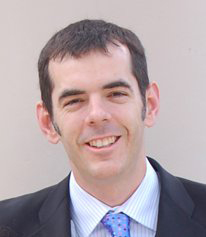Green Tomato: 13 Ways to Improve Profitability in 2013
01 June 2013
 A significant profit center in any foodservice operation is energy efficiency and savings.
A significant profit center in any foodservice operation is energy efficiency and savings.
By Jay Fiske
As the economy and the foodservice industry appear to be gaining steam, are you prepared to reap the full benefit? While operators are conditioned to keep a tight rein on food and labor costs, when it comes to overhead, many throw up their hands in frustration and resignation. You might not be able to change the terms of your lease or rising property taxes, but with a few easy actions, you can control much of your energy destiny.
Best of all, every energy dollar saved is pure profit. For an operation with an 8% profit margin, you’d have to increase sales by $12.50 to add just one dollar in profits. To keep that in perspective, if you cut $500 a month in energy expense, that adds an additional profit of $6,000 per annum. To generate that profit in the traditional way, you’d have to increase sales by $75,000. So there’s not a moment to lose!
1. Benchmarking – Know your starting point. If, like many of us, your electricity, water and sewer bills are virtually impossible to decipher, contact your local utilities and they will be happy to help. If you have more than one restaurant, you’ll want to benchmark all of them to optimize savings and compare statistics across the board.
2. Conduct an energy audit. This is another area where your local utility might be able to help, as it, too, wants to reduce energy load. If it can’t help you, there’s a superb self-audit tool developed by Food Service Technology Center(FSTC). Take time to explore that site, as it offers a wide array of energy resources. Following are some of the areas that you’ll want to check:
a) Food preparation – Range tops, ovens, fryers and steamers.
b) HVAC – Thermostat settings, ventilation, patio heating and cooling.
c) Sanitation – Sinks, dishwashing areas and restrooms.
d) Lighting – Back and front of the house, storage rooms and parking lots.
e) Refrigeration – Walk-ins, reach-ins and condenser/evaporator coils.
3. Employees on the front lines. Gather your team together and discuss why the energy-saving mission is as important to them as it is to you. Brainstorm conservation ideas for each operational area, set goals, share your progress and celebrate victories. Small incentives like tickets to local attractions and gift cards are also helpful, letting your employees know that their efforts are important and highly valued.
4. Schedule energy usage and maintenance. A common thread among these tips is scheduling equipment usage and maintenance. It is the backbone of your program to control energy use, providing clear operational direction for employees that will save energy and maintain equipment to maximize life cycles. To fully leverage many of these tips, these schedules are invaluable in keeping your efforts on track.
5. Time of Use (TOU) pricing. Commercial electricity pricing is generally tied to the time that it’s used. Generally speaking, the highest prices occur between noon and 6:00 p.m. This knowledge should figure heavily into developing your energy schedule outlined in Tip #4. One of the easiest changes is to make all of the ice during overnight hours that you will need for the next day. During the mid-morning and mid-afternoon lulls, turn off as much equipment as possible.
6. Don’t get spiked by demand charges! Based strictly on your business’ highest rate of usage or energy spike in a 15- or 30-minute timeframe, this can result in a surcharge applied to every kilowatt of energy used. In some cases, demand rates are fairly low, perhaps only a few dollars per kilowatt. But they can range up to $20 or more per kilowatt. For example, a peak demand of 90 kilowatts and a surcharge of $12/kW will add $1,080 to a monthly bill. Even scarier, some utilities charge what is known as “full ratchet” demand rates, basing the surcharge on the peak demand at any time during the year, rather than the month. They use that rate and retroactively apply the surcharge for every month of that year. That’ll drive a spike right through the heart of your business! Fold this knowledge into your start-up/shutdown schedule by running ice machines overnight and staggering the start-up schedule of kitchen equipment rather than flipping everything on at once.
7. Kitchen equipment. Set up a regular cleaning and maintenance schedule, broken down by day, week, month and annual needs. Just like an automobile, it will ensure efficiency and increase equipment life-cycle. Wherever possible, cook with equipment fully loaded. The same is true of your ware washer. And when old equipment needs replacing, consider ENERGY STAR®. It might cost a few dollars more up front, but significantly less in the long run due to energy savings. Also, check your local utility for potential rebates.
8. Kitchen ventilation. Push equipment as close to the wall as possible and move the lowest-duty appliances to the outer edge of your hood. Add inexpensive panels on the outer sides of your hood to optimize efficiency and turn the exhaust fan off when equipment isn’t in use.
9. Refrigeration.There are a number of ways to reduce usage in this area: a) keep doors closed or install strip curtains or plastic doors; b) enable automatic door closers; c) decrease the number and length of defrost cycles; d) leave room behind reach-in units to allow coils to efficiently disperse heat; e) maintain doors, checking for misaligned doors and worn-out gaskets; and f) have equipment professionally serviced at least once a year.
10. Lighting. Maximize daylight wherever possible and go with energy-efficient lighting including CFLs, T5 or T8 tube fluorescent tubes and dimmable LEDs. Use timers to implement a lighting schedule and consider occupancy sensors for areas that get sporadic use, such as store rooms.
11. Water. Would you pay $60 to save $100 to $400 a month, $6,000 to $24,000 over the next five years? I bet you would. And it’s so simple. Replace the standard spray valve used in your dishwashing area with a low-flow model that lasts about five years without sacrificing washing efficiency. That’s all there is to it. Here are a few more water tips:
a) Install low-flow aerators on hand sinks. Potential savings? $100 per year per sink.
b) Replace old toilets with high-efficiency, pressure-assisted models. And go with a low-flow or waterless urinal. Potential savings? Water usage cut in half.
c) Set your water heater at 130°F and insulate pipes for the first 3 feet of the hot-water line. Potential savings? $300 a year.
d) For areas you clean with a hose, consider a water broom. Potential savings? Based on usage of one hour per day, save about $500 per year in water and another $500 if the water is heated.
e) Change to low-flow dipper wells used for rinse-and-hold stations on the front line. Potential savings? Based on a 16-hour operating day, save $1,000 in water/sewer costs and another $1,000 in energy to heat the water.
f) Check regularly for leaks and repair them promptly.
12. Heating and air conditioning. Here, your objective is “energy storage” during off-hours that will reduce usage during peak TOU. For heating and cooling, use off-peak hours to pre-cool or pre-heat your restaurant beyond the desired temperatures to give you a cushion that can help you make it through peak hours with minimal usage. For example, on a warm day, while your ideal temperature might be 74˚F, consider pre-cooling to 70˚F in the earlier part of the day so you can coast as much as possible during peak TOU. Essential to these efforts is a programmable thermostat. To ensure against employee “thermostat wars,” consider a tamper-proof installation and a thermostat that can be controlled remotely and locked out with software.
13. Energy management. With these tips you can significantly reduce your energy use. However, if you’re feeling a bit daunted by the many pieces to this puzzle, it’s understandable and help is available. Powerhouse Dynamics (www.powerhousedynamics.com) is the developer of the eMonitorTM, the first cost-effective, analytics-driven energy, water and asset-management solution designed to monitor all uses and sources of energy while controlling energy-intensive equipment. It can monitor one site or many, all from a computer, tablet or smartphone.
All of the above tips can help you significantly reduce your energy usage, but it does take a concerted and continued effort. And technology is rapidly evolving to help you increase the energy efficiency of your establishment.
Jay Fiske is vice president of business development for Powerhouse Dynamics, developers of the eMonitor energy, asset and water-management platform for homes and small commercial facilities. Contact him at This email address is being protected from spambots. You need JavaScript enabled to view it..
Additional Info
- CAFÉ Talks Podcast Lesson Plan: 1



